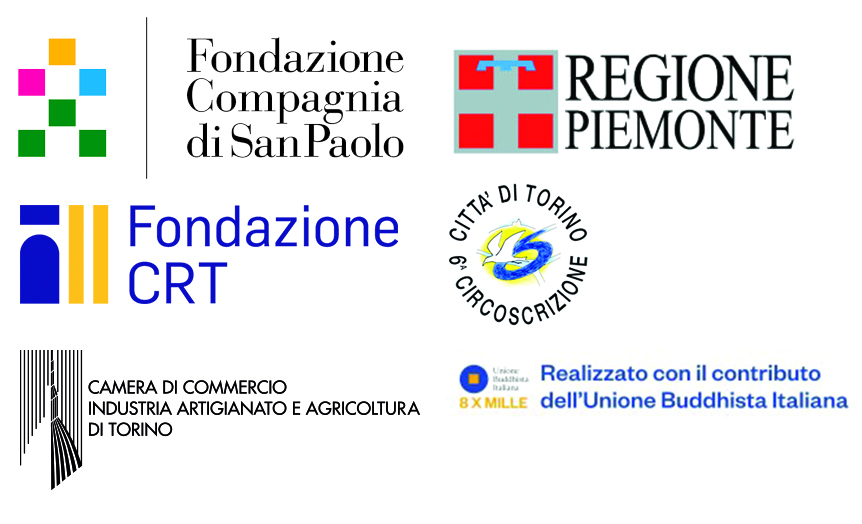Work: “Choromosoma” (2002) via Locana, 14 – MAU Museum of Urban Art – Turin
Enrico De Paris was born in Belluno in 1960, he lives and works in Turin and Venice.
Enrico De Paris was one of the most interesting artists to emerge on the Turin scene in the early nineties, in a rather confused and contradictory phase of both city and national art. The works of the early years, those that made the artist and his unmistakable style known as a sort of trademark, were mainly canvases produced with a narrative typology characterized by the proposal of imaginative but at the same time plausible metropolitan landscapes, seen with an angle produced by a hypothetical deforming lens. Subsequently, the artist managed to be faithful to his iconographic setting, not exhausting it in a short time as it was for many others who came to light in that period. After the first extroversions dated at the end of the 90s, De Paris has come to create increasingly articulated and complex installations. The artist’s poetics has always underpinned the desire to reunite with the world, the will, typical of the aesthetics of the inorganic, to break down the barrier between inside and outside, to go beyond the conception of the work as a producer of an autonomous symbolic order to make it really “open”, which was made possible by the advent of the contemporary cultural age, or post modernity, if you prefer. So his current works, those on a smaller scale as well as the installations with greater grandeur tend to account for the advent of a new historical phase in which the manipulative abilities of man on his own body, on that of others and on nature have become enormously expanded and the biogenetic horizon appears to be the theme on which the debate becomes more passionate and contradictory: it is up to art, De Paris seems to say with his witty metaphors, to set itself the goal of indicating to humanity a possible ethical dimension that it cannot ignore the eternal aspiring to Beauty. The curved shape of the artist’s compositions has always recalled the helix pattern of DNA: in “Choromosoma” the internal structure of what is the building of our body, made up of 46 chromosomes, is investigated and revealed in three dimensions. divided into 23 pairs.
De Paris concretizes his vision of art and the world by creating complex works composed of interconnected glass ampoules inside which he depicts infinite microcosms, a legacy of memory and a yearning for the future. We therefore witness the creation of “total” and multi-material works of art, where lights, sounds, videos and objects taken from everyday life coexist, to build a large and utopian fresco on the more restricted and immanent contemporaneity, in which the underlying message is the concrete hope that mankind will know how to use these new and powerful tools created by himself to build a society in which the quality of life and harmony between the various components become central.
The work, which is part of the collection of the Urban Art Museum, was created in 2002, above the wall of a building in via Locana 14, the historic site, in the early twentieth century, of the Fabbrica di Vernici Paramatti, currently owned by the collector and entrepreneur. Federico Manassero.
http://officinebrand.it/offpost/mau-museo-darte-urbana-artisti-e-opere-3/
https://www.museoarteurbana.it/enrico-tommaso-de-paris/



